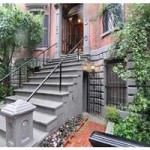Another good post by Scott.
Low interest rates today, tomorrow, forever?
Who knows where the economy will be by the time the Tea Party wrecking crew in Congress finally wears itself out.
But if there is any near certainty, it is the latest bout of uncertainty the nuttiness in Washington has injected into an already wobbly economy will keep interest rates at their historically low levels for some time to come.
Ben Bernanke and the Fed over the summer flirted with cutting back on its multitrillion-dollar home buyer subsidy program – known as quantitative easing – amid signs of a modest improvement in the economy.
But of course Big Ben beat a hasty retreat in September after the Fed’s well telegraphed intentions started to push up rates and spook the housing market.
Now with the threat of a slowdown or even a full blown Depression looming should Congress force the federal government to default on its debt payments, there’s zero chance the Fed will be backing off from its $85 billion a month mortgage bond buying program anytime soon.
President Obama’s choice of Janet Yellen to fill Big Ben’s shoes – she’s a strong supporter of the Fed’s cheap money policies – all but seals the deal, as economist Elliot Eisenberg notes in his daily “Laughs and Graphs” blog.
Here’s Elliot, the former chief prognosticator of the National Home Builders Association.
Given the government closure and resulting lack of economic data, the fact that Q3 GDP growth will be below 2% and that inflation remains very tame, virtually guarantees that tapering will not commence following the conclusion of the late October Fed interest rate setting meeting. Now with the formal nomination of Janet Yellen for the post of Chairman, I’m 100% sure tapering will not commence before January.
This is big news for home buyers – today’s low interest rates, hovering now at 4.25 percent for a 30 year mortgage, represent a massive government subsidy.
.
At their current, rock bottom level, today’s interest rates shave as much as 30 percent off the average monthly mortgage payment, at least compared to what it would be under more historically normal rates of 7 or 8 percent.
It’s hardly all gravy. There is a strong argument to be made that home buyers still pay for it all by having to pay more of the same house – just look at what’s happening with home prices.
But frankly most home buyers, for good or ill, aren’t looking at it that way.







